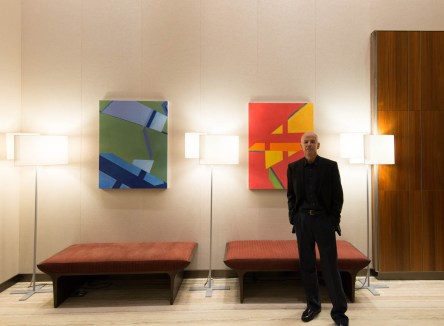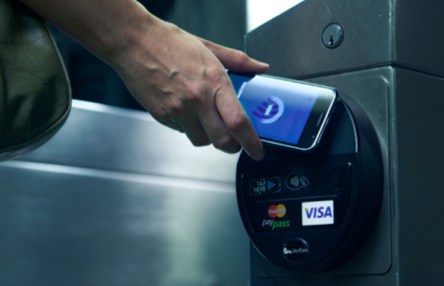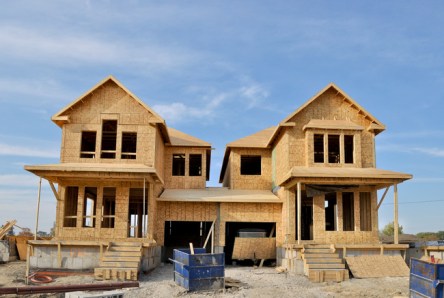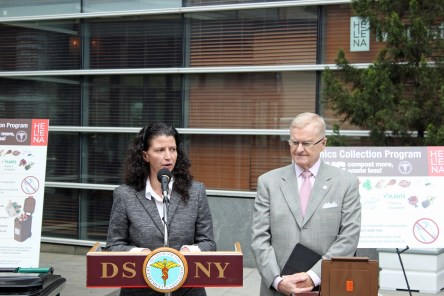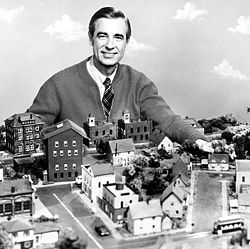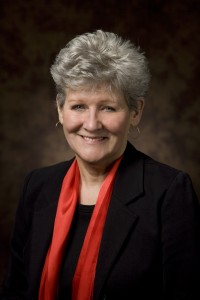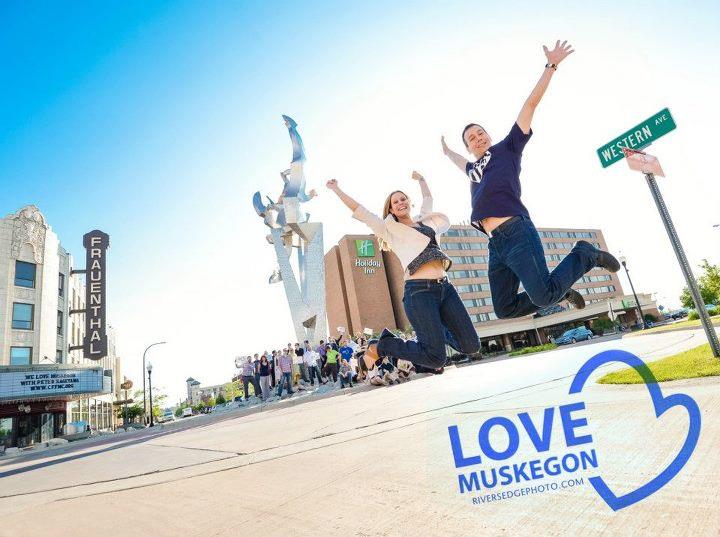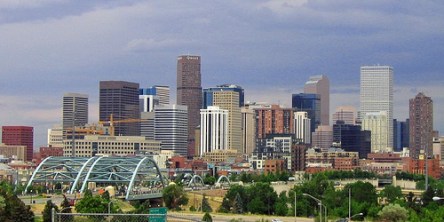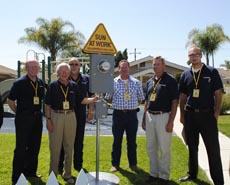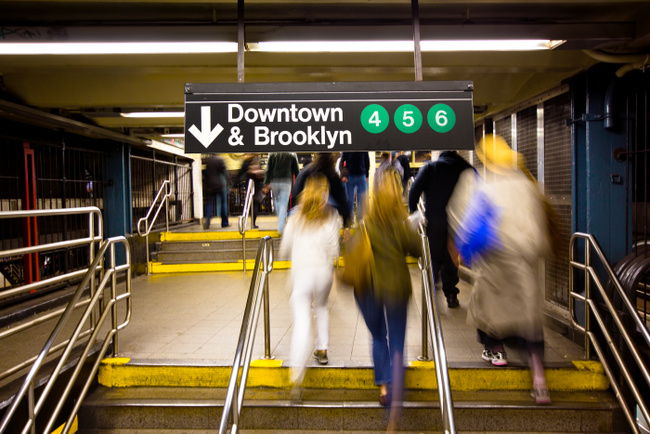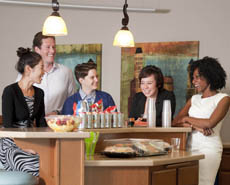A man’s home is his castle. But a person’s apartment community could be her gym, business center and social lounge. And, in some cases, a gallery. That’s right; some property managers are setting up art installations so that residents can view beautiful works of art from famous and local artists right in their very own lobby! Take, for example, the South Junction Apartments in Memphis, Tenn., which is being developed by Henry Turley Co. and Tower Ventures LLC. This community is still being developed, but when it’s completed, this apartment community will feature 12 illuminated sculptures throughout its staircases for residents to enjoy. Another example of a community displaying art for their residents is at 1214 Fifth Ave., which was developed by Related Cos. This is community in Manhattan that will feature original paintings from local artist Derek Reist. All the paintings there will be on permanent display. Not only does displaying original works of art in multifamily communities support the local artistic community, but it also provides a unique amenity and bragging rights for the residents. All that separates these communities from an art gallery is an over-priced gift...
New Lease on Life
In OKC, it’s Capitol.. on 28th
As any redevelopment professional knows, the challenge of turning an aging, crime-ridden, Section 8 property into a trendy, coveted, market-rate lifestyle community is no small task. It requires vision, planning, enthusiasm and fearless execution. But with the right attitude, aggressive mobility and perhaps a little luck, amazing transformations can become reality. In Oklahoma City, there’s one taking place right now at a 223-unit multifamily community formerly known as Park Place. Purchased by Haley Real Estate Group early this year, renamed Capitol on 28th and now undergoing a major facelift, the future is looking mighty bright for this previously run-down complex constructed in the late 1960s. With an ideal location near the state capitol and the University of Oklahoma Health Sciences Center, it is poised to become a sought after address for medical and government professionals. “It’s an ideal location for an urban contemporary community,” said Troy Arnold, regional vice president for DEI Communities, Haley’s property management arm. With that focus, DEI expects to spend $8 million on renovations and improvements. Not far from downtown, with easy access to public transportation and biking or walking proximity to two major employment centers, the potential of the location was evident. But an overhaul of the existing infrastructure, entailing major construction, was required. Yardi client DEI started an aggressive effort to change the tone at Park Place the day escrow closed on the $4.2 million sale. Crime at the property had been a major problem, with up to 900 calls to law enforcement from the address between late 2011 and 2012. DEI brought in 24-hour security by hiring off-duty police officers from the Oklahoma City police department. They also started limiting guest access only to those who were verified visitors of residents. Without wasting any time, the new...
Utility Legislation
SB750 on Submetering
SACRAMENTO, Calif. – Pending legislation that could bolster California’s water conservation efforts by mandating the metering of water in new construction throughout the state is moving forward. This week, the California State Senate passed an amended version of SB750, which would require individual unit water metering at all newly developed multiunit residential structures or mixed-use residential/commercial projects. SB750, introduced by Senator Lois Wolk (D-Davis), is being tracked by the Utility Conservation Coalition (UCC) and Utility Management Conservation Association (UCMA), two utility management advocacy associations. Martin Levkus, Yardi Systems’ Vice President and General Manager of YES Energy Management, is a director at the UCMA, which has provided technical expertise on submetering and utility billing to the bill’s authors to inform the legislation’s development process. The bill would require individual unit water meters or submeters in newly constructed multifamily or mixed-use residential and commercial properties that are under four stories. Existing properties would not be required to install submeters. Though a planned enforcement date of January 1, 2014, has been proposed, the legislation has yet to be approved and signed into law. Depending on when the bill is approved, the enforcement date could be delayed. Based largely on the advocacy of the UCC and UMCA, a recent amendment to the bill, considered crucial to many in the multifamily industry, removed a prohibition on Ratio Utility Billing Systems (RUBS) from the legislation. RUBS allow property owners to calculate the portion of water/sewer charges that are passed on to residents based on occupancy, the square footage of their apartment, or other associated factors. Under the current version of the bill, existing RUBS properties would be grandfathered, and landlords would be able to pass through a monthly administrative fee of up to $4.00. If the tenant’s water bill is...
Near-Field Communications...
Uses for property management
Increase your property’s visibility to perspective clients while promoting tenant engagement through advances in near-field communication. You may recall advertisements for various smartphones where file and photo sharing occur by simply bringing the devices within a few centimeters of each other. You may have also seen SmartPass devices in stores and vending machines that allow customers to pay for products and services by passing their credit card over a tag. Such technologies are examples of near-field communication (NFC), a rapidly growing series of standards that allow mobile devices to communicate with other devices within close proximity. NFC has taken hold in various pockets of commerce and entertainment, making transactions faster and more convenient. Ticketing for transportation and entertainment venues around the globe utilize cards and key fobs to permit access goods and services. Box offices allow patrons to present digital tickets in place of their paper counterparts. Loyalty programs for various stores rely on stickers and cards to connect customers to rewards and discounts. Perhaps most importantly, many of us have offered silent expressions of gratitude as our children quietly enjoy multi-player gaming on separate devices while sitting in the back seat of the car. It sure beats arguing over the radio station. The versatility of NFC has proven to be its greatest asset. NFC standards permit a nearly effortless exchange of images, videos, data and text. It can replace paper while still leaving a trail suitable for verification and authenticity. As the market continues to grow, the potential of NFC will continue to expand. Near-field communication lends itself to practical and fun uses within the multifamily housing industry: – Leasing agents can create and instantly share marketing cards that include contact information, property details, property photos, video and more. (Yardi PopCard is a...
In the Doghouse
Pet-friendly amenities
It’s been said that the way to a man’s heart is through is stomach. And, apparently, the way to a renter’s heart is through his or her dog. Not only are more and more buildings pet-friendly nowadays, but some property managers are adding amenities specifically catering to man’s best friend. Communities are banking on pet-focused amenity offerings, such as dog parks and pet grooming areas, that promote their facilities as home sweet home for pets and humans alike. For example, Rockrose, which manages residential buildings in New York, offers The Spot Experience, which is a third-party dog amenity provider. This service includes dog walking, cage-free daycare, overnight boarding, training and non-surgical vet services, such as nutritional plans and vaccinations, at their buildings. Spa treatments for dogs are also offered, which could even include facials. (It’s a ruff life for dogs nowadays.) Other property management firms such as Rose Associates, Argo and Millennium Partners, are also getting in on the act and offering the Spot Experience. Yardi client Stonehenge has created resident events programming specifically focused around pets, including a fashion show for dogs with a runway and judges and a holiday-themed event where residents could have their dogs’ pictures taken with Santa Claus. Of course, membership to the Spot Experience doesn’t run cheap—about $200 a year, or $25 a day for members or $50 for nonmembers—but that isn’t stopping residents from participating. The expense is worth it for the renters. And it is definitely worth it for the property managers. Are you offering a unique pet-friendly amenity at your community? Tell us about it! Jessica Fiur is News Editor at Multi-Housing News. Find more of her insights on multifamily living on the “What Renters Want”...
Green + Luxury
Post Bros. in Philadelphia
Across all sectors of the real estate marketplace, Yardi clients are innovators when it comes to development, management, operations and producing returns on investment. In Philadelphia, Yardi client Post Brothers is defining a new niche in multifamily living with units that are both eco-friendly and targeted to the renter who appreciates luxury and high quality of life. “The Goldtex Lofts can best be described as a new breed of Eco-Chic apartments. Not only are these luxury units on the cutting edge of design with the highest-end amenities, they were built with the most advanced environmental features available, creating a new standard for green development in Philadelphia and beyond,” Post Brothers CEO Mike Pestronk told Multi-Housing News’ Jessica Fiur. You can find the full interview with Pestronk about the project, including details on the design and environmentally-conscious aspects of the project, on Multi-Housing...
Multifamily Growth
Outperforming the Recession
Renter households increased from 34.1 percent in 2009 to 35.4 percent in 2011 according to a recent report released by the U.S. Census Bureau. A consistent pattern may be observed countrywide, with nearly a quarter of the metro areas seeing a rise in renting households, while less than 3.0 percent of the nation’s metro areas saw a decline. Continued urban population growth combined with a healthy job market and a change in occupant mindset has sparked the creation of a vigorous multifamily sector which has now become the engine behind the recovery of the real estate industry. The desire to retain mobility to pursue employment opportunities as well as a preference for urban lifestyles among many households is expected to support strong operations in the apartment market throughout 2013. A recent American Community Survey brief permitted the comparison of all 366 metro areas in the U.S. based on four characteristics of the rental housing stock: gross rent, gross rent as a percentage of household income, rental vacancy rates, and renter share of total households. The study found that the rental vacancy rates for the nation declined from 8.4 percent in 2009 to 8.2 percent in 2010 to 7.4 percent in 2011, indicating a tightening rental market. Nationwide, more than 2 in 5 renter households (44.3 percent) had housing costs that consumed 35 percent or more of their income. “While we saw a decrease in rental vacancy rates and pricing in some areas, the burden of rental costs on households increased across many parts of the nation,” said Arthur Cresce, assistant division chief for housing characteristics at the Census Bureau. “Factors such as supply and demand for rental housing and local economic conditions play an important role in helping to explain these relationships.” Only 11...
Multifamily Composts
NYC takes the lead
When it comes to new multifamily communities, nowadays it’s pretty much “Go Green or Go Home.” And that’s a very good thing. With more and more people conscientious about protecting and preserving the environment, developers are taking note and incorporating eco-friendly features into the buildings. Whether it’s building to qualify for a LEED rating, incorporating Energy Star appliances into the units, or including a charging station for electric cars, the multifamily industry is becoming more and more sustainable. And New York City has certainly stepped up its green game. The Helena, a multifamily community on the Upper West Side in Manhattan, is the first to utilize the Organics Collection Program. This program allows residents to compost items such as fruits, vegetables, egg shells, pasta, tea bags, coffee grounds and filters, bones, flowers, houseplants and soiled tissues. The residents are given small containers to sort their organics, which they deposit in bins in the trash room. So, they’re already making the trip down there—what could be simpler? All said and done, this program will divert an impressive 35 percent of resident waste at The Helena from landfills. Hopefully more communities in Manhattan—and throughout the country—will start to participate in this or similar composting programs. And we can be sure that multifamily will continue to show its true colors (shades of green, obviously!). Jessica Fiur is News Editor at Multi-Housing News. Find more of her insights on multifamily living on the “What Renters Want”...
More Social Power
New Editor for Facebook Ads
Facebook has introduced a powerful tool for managing online advertising campaigns that is being heralded as a major advancement in targeted marketing. If you are using social media-based ads to reach potential renters for your multifamily property, the Facebook Power Editor could change and enhance the campaigns you create. It allows you to create and manage multiple advertising efforts at once, which means you can parse your ad budget according to the markets you most wish to reach. Placement of the ads within Facebook is a major added feature offered by the Power Editor, which will allow you to select where you want your ads to show up. You might choose to advertise in the Facebook News Feed (where users are accustomed to seeing posts from their Facebook Friends) or continue to advertise in the right side bar of the site, where advertising has traditionally appeared. However, many Facebook users say that they no longer see the right hand column, considering it a “blind spot” where ads will be ignored. You can also use the Power Editor to ensure your ads only appear on mobile devices, which is increasingly the way most users engage with Facebook – more users now use phones or tablets to reach the site than computers. And that group is getting larger – the number of people accessing the internet via a mobile phone has increased over 60 percent to 818.4 million since 2011. The mobile version of Facebook is a very different interface from the web-based interface, and ads must be formatted differently to reach mobile users. Using the Power Editor, which can only be accessed on the Google Chrome browser, you can decide on how large of an audience you’d like to reach. Targeting specific groups within the...
Niche Amenities
Improving resident retention
While there is no failproof strategy for retaining residents, there are certain features that have a great impact on renewals, mostly related to the property’s ability to respond to the residents’ needs. When prospects are first introduced to a community, they are more likely to consider things like location, rental rates and curb appeal. Once they become residents, their attention shifts to the service level, the security and quality of the living environment, as well as management’s performance. Along with the availability of an online platform for paying rent or submitting/tracking maintenance requests and the onsite presence of responsive office staff, niche amenities are a key driver of resident satisfaction. Simple Innovation Amidst a series of distinctive features aimed at enhancing the renting experience, biking facilities could be a deal breaker for those looking to commit to healthier, more sustainable lifestyles. As a result of the growing bike culture and the benefits associated to this alternate form of transportation that’s both affordable and green, major urban cores around the country have started developing or expanding cycling infrastructure, with cities like Boston, Chicago or San Francisco boasting impressive biking networks, numerous municipal bike racks and protected bike lanes, as well as solid bike sharing programs. The Chicago Streets for Cycling Plan 2020 calls for a 645-mile network of biking facilities to be in place by 2020 to provide a bicycle accommodation within half-mile of every Chicagoan. Even New York City is interested in providing New Yorkers with an additional transportation option for getting around the city. Dubbed Citi Bike, New York’s bike sharing system is scheduled to launch in May 2013, offering 10,000 bikes in 600 stations that will be available for use 24 hours a day, 365 days a year. Taking the idea of...
Welcome Neighborday
Community connections
Whether you live in an urban apartment building or on a quiet suburban street, we all have neighbors. The loveable Fred Rogers urged us to be good to them with his charming “Won’t you be my neighbor?” tune. No matter what generation you belong to, most of us know the lyrics to that one – and it never fails to remind me that it’s good to be neighborly. On Saturday, it will indeed be a beautiful day to celebrate neighbors and neighborhoods everywhere. National Neighborhood Day takes place in September, but a new effort to celebrate neighbors, called Neighborday, is set for April 27. An effort by Los Angeles-based GOOD magazine to encourage neighbors to meet, greet, and hang out more often, Neighborday celebration suggestions include hosting a potluck for your street, block or apartment hallway, knocking on a door and introducing yourself to a neighbor you’ve never met, or taking a tasty baked treat to the guy, gal, or family next door. We’d broaden the concept to celebrate the neighborly connections that occur at any multifamily community, be it an apartment building, affordable or public housing development, senior, military, or student housing. This would be a perfect opportunity to use social media to share the concept of Neighborday with your residents. GOOD suggests: “Whether it’s as simple as summoning the courage to ask the guy in apartment 3B what is name is…again, or as ambitious as coordinating a full-fledged block party replete with a mariachi band, bouncy castle, and street hockey tournament .. DO IT.” It may be a little late to throw together a huge event, so here are a few suggestions about how you could simply celebrate Neighborday at your community. –Use social media to get the word out. Tell your...
Focus Green
Earth Day all year at Alliance
Today, April 22, is Earth Day. Alliance Residential Company is among the Yardi multifamily clients that will mark the occasion: A tree will be planted at almost every Alliance community this week, except those that are in exceptionally urban environments or have special circumstances. “The goal is to plant a tree at the majority of our Alliance communities,” said Kelly Vickers, Alliance’s National Director of Sustainability. “Trees do so much for the environment: filtering air pollution, reducing soil erosion, creating shade, helping recycle water.” Alliance’s facility directors, who oversee 257 apartment communities across 13 states, worked with the companies’ regional landscaping vendors to coordinate the selection of appropriate local native trees, which will find new homes in the ground at each community site. The properties that can’t plant trees are helping out in a different way, such as supporting the Nature Conservancy’s “Plant a Billion Trees” campaign, which is working to preserve Brazil’s Atlantic Forest, an endangered tropical forest, and entails planting a billion trees by 2015. Each $1 donated equals one tree planted, and Alliance communities are encouraging their residents to support the cause. Broadening awareness about the benefits of sustainable living is just one aspect of Alliance’s Focus Green campaign, which was formally launched in 2012. Earth Day comes and goes in a flash. With Focus Green, Vickers and Alliance have developed a set of comprehensive principles to help guide the company toward a greener future. This year, the program will expand into action items that touch development, operations, training and administration. “The program has two overarching goals. The first is to reduce the consumption of energy and natural resources at our communities and our offices. The second is to educate, promote and support our associates’, residents’ and owners’ participation in more...
Sunset for 179D?
Tax discount set to expire
Over the last eight years, one financial motivation for building energy-efficient buildings, in both the commercial and multifamily sectors, has been the Energy Policy Act §179D tax deduction. §179D allowed for up to $1.80 per square foot of reduced tax liability for structures utilizing energy-efficient operating systems. The policy is scheduled to run out at the end of 2013 if it is not re-approved by Congress before its expiration date of Dec. 31. Philip Shea, Associate Editor of Multi-Housing News, recently interviewed Marky Moore, CEO and founder of Capital Review Group, on the subject of the expiring EPACT §179D tax deduction and what’s next for commercial-residential multifamily as a result of its expiring status. You can read the full interview at multihousingnews.com A few key insights shared by Moore include: -Energy efficiency is still a hot topic in Washington, D.C., but there are no current plans to continue the reduced tax liability as it exists today. -Qualifying to use EPACT §179D has been difficult so not many owners have taken advantage of it. -More education and awareness on the increasing costs of power and energy is needed to encourage retrofit and efficiency adoption...
Sharing the Love
Effecting Community Affection
Have you ever thought about what it would take to get your residents to not just like, but love, where they live? Meet Peter Kageyama. He’s an expert on community engagement and the emotional power of place. That means that he has great ideas about how to make cities and spaces more interesting, create deeper personal connections between people and place, and understand our complicated relationships with where we live. Author of a book called “For the Love of Cities” and co-founder of the Creative Cities Summit, Kageyama travels the country as a consultant, facilitating conversations between city leaders and citizens that often result in fun, simple, clever community projects. The sorts of efforts he encourages are grassroots, don’t cost much money, don’t require building or event permits, and yet often leave lasting impacts. A native of Ohio and former attorney who found his real passion was a much more creative calling, Kageyama is a dynamic speaker and dedicated observer of unique urban details. Since his book came out, he has visited 50 cities around the country, where he listens to people talk about what makes their community an exceptional place to reside. “I get to see them the way the people who love them do, to look through the lens through which they see their city. It’s very much a blessing,” he said of his travels and consulting experiences. The types of projects that Kageyama sees as effective affection-builders aren’t the sorts of things that you might expect from a long term community plan or a visioning summit. Some of them might seem totally off the wall. One of the cities he’s played a role in helping is Muskegon, Michigan, where the Love Muskegon campaign has created a viral iconic symbol that can be spotted all over town, a new ritual in which people toast the sunset over Lake Michigan, and even random civic boosters in green bodysuits and masks who show up at community events (yes, really). “They don’t talk, they just want to make people smile and say ‘We love Muskegon’ and do something kind of cool – it’s genius,” Kageyama said of the masked green men. Other ideas include pop-up art, performance, retail and food carts, street chalking, painting colorful murals on boring buildings, temporary seating in vacant lots or unused parking lots, a creative slogan of affection for the city that could be printed on bumper stickers or t-shirts, and many more. The only limits to creativity are a communities’ collective imaginations – and willingness to pitch in to make something happen. “It turns out that there’s a pretty big gap between having an emotional connection to a place and doing something for the place. That’s one thing I emphasize in all the work that I do and all the cities that I go to – how you traverse that gap,” Kageyama said. For multifamily managers, that’s a reality that likely rings true. You may know that your residents love living in their hometown – and at your apartment community. Perhaps they tell you every time you see them around the complex or in the front office. But translating that love of their home to a Like for your Facebook page, positive review on Yelp or ApartmentRatings, or attendance at a resident mixer may still be difficult. Buying into a community-wide engagement effort can be one way to foster resident affection, both for your community and your city. Kageyama encourages multifamily developers and managers to participate in community visioning efforts, even without a pending development project. And if you are in the planning or construction process, engaging the community before lease-up is ongoing can be a great way to build goodwill and excitement about the forthcoming new apartments. “I’m trying to get people to maintain that level of excitement and engagement and enthusiasm in a project, right now, and for the foreseeable future. What...
Millennial Shift
NAA Student Housing Expo
Homeownership has long been considered the basis of the American dream. Today, we are witnessing a massive shift in perspective, with young adults breaking away from tradition and rearranging their life goals according to personal preferences. Loosely defined as those aged 18 to 30, the financially-savvy, eco-minded, highly-educated Millennials are expected to change the face of the consumer market. Understanding how Millennials think, their ideals, needs and outlook on life is key when preparing to meet their housing needs, says Michael Wood, senior Vice President of youth research firm TRU Insights. As a keynote speaker of the sixth National Apartment Association (NAA) Student Housing Conference & Exposition held in Las Vegas Feb. 25-27, Wood shared several research-based revelations about these young people who have been forged in the heat of the Great Recession. Whereas their predecessors, commonly referred to as Generation X, freely embraced mortgage-governed lifestyles, Millennials (or Gen Y-ers) are somewhat reluctant to follow in their footsteps. Deeply anchored in the realities of our times and strongly committed to green living, this group is rather conservative in its spending, always on the lookout for bargains, good deals and fair-trade, eco-friendly products. Wood pointed to Marni for H&M as an example of the type of product young people want to buy. The popularity of this fashion designer’s clothes for bargain prices speaks to a desire for high quality at a low price point. How does the Millennial mindset play a role in housing? In a post-recession economy where younger consumers are already comfortable with buying used items and borrowing from friends, renting seems to be a viable alternative to homeownership, satisfying Millennials’ need for flexibility and financial comfort. Unlike Generation X, Wood reported, Millennials are all about school spirit, social causes and cutting back, versus gangs, smoking and cutting class. Studies showed 67 percent of 20-somethings and 63 percent of teens would prefer to have a secure life that’s not exciting, over an exciting life that’s not secure. What was once considered a solid investment, like a house or a car, is now seen as risky business, triggering a sort of commitment phobia in younger adults and forcing them to postpone major life decisions like marriage and having children. What do Millennials seek in their apartment choices? To appeal to Gen Y-ers, who are currently the largest segment of the renting population, property owners must provide a perfectly balanced live-work-play environment, with emphasis on the social component of the community. Millennials are willing to look beyond traditional housing options and don’t mind sharing space with several other roommates if that means pragmatic living. Downsizing is also an acceptable option for young renters, who prioritize location, technology, and eco-friendly design over spacious single-family homes. Furthermore, Wood advised those in the student housing industry that potential renters want granite counter-tops and stainless steel appliances, but at low and valuable prices. What are the most important things developers need to consider when it comes to marketing their properties to Millennials? Young renters are looking for transparency, ease and practicality in their renting process. As the first cohort of digital natives, they expect a seamless experience with the property manager’s website every time they visit it. The solution is to create a website that works well on every device, from desktop browsers to tablets and smartphones. Showcasing user-friendly features, responsive design websites, like those available from Yardi Portal, provide an optimal viewing experience on every screen, ensuring a smooth relationship between property managers and prospective renters on a regular basis. In addition to tech offerings, Millennials value authenticity a great deal. Property managers need to be prepared to take ownership of what’s being said about their properties online, engage in social media conversations and maintain a professional attitude at all times. Wood says that Facebook is boring to young people, who these days are experiencing “Facebook fatigue.” While Facebook has lost some of...
Interest in Pinterest...
Social media strategy
As a property manager, it may become prudent to ask yourself: Are you getting the most out of Pinterest? This new social media tool has skyrocketed in popularity over the last year, and owners and operators across the country are finding it is a great way to promote their communities. In a recent webinar called “Pinterest for Property Managers,” Charity Zierten, a consultant for Socially Engaged Marketing LLC, provided tips and tricks to integrate Pinterest into a winning social media strategy. The key aspects for a successful professional Pinterest account include being professional, being relevant, and focusing on great products, fun communities and inspiring ideas. According to Zierten, it’s important to integrate Pinterest with a property website, including adding a “Pin It” button so that people can pin directly from the site. She also suggested that property employees, such as leasing agents and people on the maintenance team, take pictures of the property using their smartphones, and pinning those pictures directly to community boards. And, while Zierten definitely recommends pinning original images to Pinterest boards, she also suggested repinning applicable images from other people’s boards. “It’s the polite thing to do, especially if they’re residents,” Zierten said. Additionally, Zierten suggested incorporating Pinterest accounts with Facebook accounts. “This is how you’re going to generate leads,” she said. One way to generate leads through Facebook is to announce Pinterest contests on Facebook feeds. Beyond being a way to increase a social media profile of a community, Zierten said that Pinterest is useful because it could increase a property’s presence online. “Google loves Pinterest!” Zierten said. It is crucial to optimize pins for online search and to get the most repins. One method is to have a call to action in the pin’s description, such as “lease...
Lifestyle Living
Apartments for picky renters
Things are changing fast in the apartment rental world. Generation Y is pouring almost 80 million potential renters into the market, and these new tenants are a hard-to-please, tech-savvy demographic. Many multifamily properties have upgraded to keep up with the demands of these new renters, resulting in new amenities which not long ago were considered luxuries. Catering to boutique preferences means not only that renters have an opportunity to select an apartment that will reinforce their lifestyle choices, but apartment marketers can focus on unique and creative sales pitches. Pools, fitness and business centers, tennis courts, comfortable clubhouses, and average laundry facilities won’t make you stand out – all are common these days. Access to high speed Internet, whether hard-wired into apartments or available as universal, dependable wi-fi around the property, is a must. Leading edge developers have discovered new ways to attract residents and to keep their current tenants in high spirits. A few of the concepts they’ve come up with: Outdoor green space is close to impossible in some metro areas, but apartment complexes with a healthy development plan highlight this amenity incorporating within the property walking trails, Zen gardens, rooftop meditation oases, benches, fountains, and dog parks. The older apartment communities might not have the means to offer the modern green space perks, but the newer ones know that a well-kept garden with a grassy courtyard and tree-lined landscape can work wonders on the residents’ psyche. Some apartment complexes go as far as offering individual garden plots for the nature-loving tenants who want to grow their own flowers or vegetables. Exuding a healthful lifestyle on property sites takes many forms. Many communities are designated smoke free zones, free of wafting second-hand smoke with no cigarettes or cigars allowed anywhere on site....
RedPeak is Red Hot
Focused on the Front Range
Millennial renters want to live in urban neighborhoods with personality, ideally ones that are walkable, bikeable, and have shopping, service and entertainment amenities within a few blocks. Their desire for apartments in hip and up-and-coming city sectors is influencing multifamily development trends around the nation. An intensely local focus can be part of a great business plan as well as a way to meet consumer demand, and such an approach is serving Denver-based RedPeak Properties exceptionally well as the company grows in the city’s most popular neighborhoods. Not only is RedPeak solely focused on offering exceptional apartment experiences in the Denver area, but they are targeting the red-hot market for walkable urban neighborhoods, which are all the rage with young Colorado apartment renters. Apartment occupancy in Denver is at an 11-year high, and the city is a national leader in rent growth. Yardi client RedPeak celebrated its 10 year anniversary in 2012, and the company’s 15 multifamily properties will be joined by two new developments built from the ground up, as well as a renovation of a historic Denver hotel, in the next 12-24 months. To help meet the Denver demand for urban housing with fun things to do nearby, currently under construction in uptown Denver is RedPeak’s One City Block project (rendering, left), a mixed-use community with 302 apartment units that will encompass an entire city block. Sidewalk level retail encompasses 9,800 square feet, with tenants yet to be announced, but the commercial leases are in high demand. Residents will enjoy views of the city and the Rocky Mountains from one of four uniquely themed rooftop decks, and the project is being constructed according to Silver LEED certification standards. A second mixed-use project with 150 apartments, Highland Square, is planned for the popular...
Apartments’ Impact
New economic study
The results of a study published Tuesday, jointly funded by the National Apartment Association and National Multi-Housing Council, offer one of the most comprehensive looks to date at the size and scope of the nation’s multifamily industry, and the economic impact of its 35 million residents. The survey was conducted by Stephen S. Fuller, Ph.D., George Mason University Center for Regional Analysis. The numbers are impressive, illuminating how many residual benefits can be attributed to apartment renting. The findings in the study are validation of the construction and development patterns observed by walkable urbanism researcher Chris Leinberger. Renters want urban apartments with services and amenities within easy reach. As he told us last week: “Any list of walkable metro areas that are doing well is also the list of best performing real estate markets.” The survey looks at major metros Atlanta, Boston, Chicago, Dallas, Denver, Houston, Los Angeles, Miami, New York, Philadelphia, Seattle and Washington, D.C. in detail as to how apartments contribute to their economies. To see state-by-state breakdowns on the number of apartment residents, apartment homes, jobs supported and contribution to statewide economy, visit the Apartments: We Live Here interactive infographic. Though new construction gets a lot of attention, especially post-recession, don’t overlook the economic boost provided by ongoing maintenance of existing apartment homes. According to Fuller: “Often overlooked as an economic contributor, the industry spent $68 billion operating and maintaining the nation’s 19.3 million apartment homes in 2011 alone. That’s 4.5 times the amount spent on multifamily construction,” he wrote. And as more apartment communities are constructed to meet growing renter demands, those numbers are only going up. Here’s a quick look at some of the highlights from the study. Today: 34.6 million: number of apartment residents in the United States...
Natl Apt Careers Month...
Professional opportunity
February may be best known for its short duration and lineup of “fun” holidays – the Super Bowl, Valentine’s Day and Presidents’ Day always make the second month of the year quite delightful. It’s also a month to celebrate career opportunity in multifamily, with the National Apartment Association’s National Apartment Careers Month. “We find that many people who would make good candidates for apartment industry jobs simply are not aware of the many career opportunities to be found in our industry,” said Maureen Lambe, CAE, Executive Vice President, National Apartment Association Education Institute (NAAEI). “College Hospitality, Marketing and Business management majors are especially suited to our industry but have never heard of us. It’s also an opportunity for us to encourage hiring managers to not just look for previous industry experience when evaluating job candidates but also to look for those core competencies that are key to the industry, such as delivering good customer service, solid problem-solving skills and the ability to juggle many different tasks without dropping any of them.” Post-recession, the multifamily industry has rebounded strongly, creating many opportunities for employment. Apartment careers typically offer work that will be interesting and involve varied tasks, people skills, and excellent chance to advance in the company. As John Cullens, president and founder of ApartmentCareers.com, told us in 2012: “The job growth we’re going to see because of new development that has to happen is going to have our industry grow somewhere in the 20 to 25 percent range in the next 8 years. We had a lot of units that needed to be added to the mix.” Some apartment industry vocations are already seeing shortages of qualified candidates. That’s why the NAAEI has created professional development programs that aim to get workers ready for skilled...
Harnessing the Sun
HACSB Solar Project
Investing in earth-friendly sustainability, the Housing Authority of the County of Santa Barbara (HACSB) took green to the next level with the recent installation of solar photovoltaic (PV) systems on 90% of its housing units. It’s a precedent setting project, and one of the largest solar projects by any housing authority in the country, to date. The story of this initiative is as much about the process as the result. Initially, the photovoltaic project was expected to cover just a small portion of the Housing Authority’s portfolio with funding through a stimulus grant offered by HUD. But a confluence of other grant options available made a portfolio-wide retrofit possible. The effort resulted in 863 of HACSB’s almost 1000 units installed with solar PV, a system sized at 1.7MW – enough to offset 100 percent of the electricity energy needs for the 863 units. The PV project utilized American-made solar panels from SolarWorld and employed a local business, Planet Solar, for the installation. “This was a case of unique timing and a whole host of funding sources in order to pay for the project,” says Loren Reeves, HACSB bookkeeper and solar initiative project manager. In addition to the HUD stimulus funding, the HACSB utilized $3.5 million in funding through Multifamily Affordable Solar Housing (MASH) offered through the California Public Utility Commission (CPUC). Following MASH, the HACSB opted to go all in, taking advantage of available 1603 federal funds from the U.S. Treasury Department. Ultimately, all $12.5 million for the project was paid for from grant funding, meaning that once the switches flipped on, the Housing Authority and its residents received immediate relief on their electricity bills. “We are really proud of this project and I think a lot of other people in the community...
Walkable Urbanism
The future, on foot
Do you remember the last time you walked by a multifamily community under construction? Think carefully about the walking part, because it’s important. Chances are, you were strolling in a city, not a suburb. Does anybody walk in the suburbs, other than to take the dog around the block? The answer to that question might hold the key to how development patterns will change, nationwide, over the next half-century. Apartment construction has bounced back big time, post-recession, and the hot spots for building are big cities with appeal to Millennials and Baby Boomers alike. Seattle, Portland, San Francisco, Los Angeles, Salt Lake City, Denver, Houston, Dallas, Chicago, Minneapolis, New York, Boston, and Washington D.C. “This is becoming a tale of two metro areas in this country: Those that get it, those that understand that walkable urban development is where the pent up demand is, and those that don’t. Any list of walkable metro areas that are doing well is also the list of best performing real estate markets,” said Christopher Leinberger, the leading expert on the walkable urbanism trend. In some urban neighborhoods, developers can’t build fast enough to keep up with renter demand. What’s the secret? Not the old school adage “location, location, location.” Leinberger, a senior fellow at Brookings Institute and professor at Georgetown University, describes it as closer to transit, transit, location. The research data he and his colleagues have produced on walkable urbanism has been of great interest to the media as the development cycle heats up. Having observed trends and nuance in real estate for several decades, he is perfectly positioned to explain the changing real estate development landscape. And it happens that the type of urban development he has long advocated for is now rolling out – and up – before our very eyes. “This is a major structural change, and I know there’s a lot of concern out there that this is just a blip,” he said, singling out the youngest group of apartment renters, the Millennials. They’ve been leading the demand for transit-friendly urban housing, and some observers think that once they’re ready to marry and have kids, they’ll flee the cities, heading back to the suburbs. Leinberger would strongly disagree. “We have just massively overbuilt. There’s only two ways of building the built environment – drivable suburban, and walkable urban. They are diametrically opposed as far as all the various characteristics you would use to describe them. Both are market viable, so it’s not a value judgment as to one is better than the other. It’s that we built too much of the drivable suburban, because we’ve been doing that for 50-60 years. We have pent up demand for walkable urban.” Leinberger believes that the timespan for meeting that pent up demand is long – maybe even another half-century. So expect to keep walking by major development and redevelopment projects while you’re visiting your favorite cities. And in the suburbs, there may start to be similar change – or consequences. “Get an anchor that’s walkable urban, and there will be an aura around that anchor that will help bolster (property) values,” is Leinberger’s advice to outlying, non-urban areas. Cities – even small ones – that can blend destination shopping and dining, services and offices, multifamily housing and public transit access all in the same area are planning well. His insight is more than academic. Leinberger started his real estate career as managing director and co-owner of consulting film RCLCO (formerly Robert Charles Lesser & Co). In addition to his academic work, he is President of LOCUS, a network of developers and investors who support and practice walkable urban development. And to practice the philosophies he espouses, he and several partners founded Arcadia Land Company, which works on transit-focused, new urban projects. The changing multifamily development pattern is just one piece of the walkable urbanism puzzle. A more complete picture requires...
Property Marketing
Tips and Tricks for 2013
Each year Google pushes out over 500 updates to its search algorithm, and 2012 was no different. In its effort to improve the quality of search results, the latest updates may have helped to level the playing field for property managers and increased the opportunity to drive leads to your doorstep. Now is the time to plan out where your online efforts will be focused in the months ahead. G+Local If you haven’t already claimed your property online, this should be your first step in 2013. If you’re unsure, simply do a Google search for your apartment community and include the city. If you’ve claimed your business it should be the first result. Select the Google+ page link to view your page. On the right hand side of the Google+ page is a link to Manage this Page, meaning manage your business listing. If your property’s website is not toward the top of the results, it most likely has not been claimed or there aren’t enough details included in the listing. Whether you need to update your listing or create a new one, you’ll need a Google+ account to get started; http://www.google.com/+/business/. Be sure to fill out all of the fields, upload your logo and photos, include a description and your website URL. One benefit of claiming your community is the increased screen real estate that will be given to your property in the search results. Google will include a map in the result, directions to the property, phone numbers and hours of operation, photos, and a link to your website. Claiming your G+ Local page is also important because Google is emphasizing personal and local results. In addition, if someone is searching for your property with a mobile device they’ll be...
Encina Meadows
The Towbes Group
They call the coastal California city of Goleta “the Goodland.” The opportunity to reside in apartments like The Towbes Group’s Encina Meadows are one reason why. With views of the beautiful Santa Ynez Mountains, Encina Meadows is a peaceful place to live. Residents told us that they love the nicely landscaped property, which includes mature trees, plenty of shade and green grass. Most apartment balconies face the A recent upgrade to the community amenities revamped the pool and Jacuzzi area, community center (available by reservation for special events and parties) and the gym. Residents can now enjoy that view of the mountains while BBQing on one of several gas grills available poolside.mountain range, and many residents have extended the greenery to flowers and mini-gardens on their individual patios. Nearby, a variety of restaurants, from sushi to Indian cuisine to traditional American fare, are within walking distance. Groceries, drug stores, banks, coffee shops and other conveniences are just a block away, and a movie theatre and public library are also close. With near-perfect weather and awesome area beaches and parks, residents of Encina Meadows have plenty of opportunities to enjoy the outdoors. And they don’t have to go far – the community pool is a popular spot for reading, relaxing and swimming, even into the fall and winter months. Residents also told us that they love the attentive service delivered by Community Manger Nadra Ehrman and her staff, who make maintenance requests and other resident needs their No. 1 priority. With friendly neighbors and such a pleasant place to call home, it’s no wonder Encina Meadows residents enjoy the Goodland life. Ehrman, her front office team, and Encina Meadows residents participated in a photo shoot for a “Your People. Your Places. Our Priority” print ad....
Maintenance Training
New NAAEI program
Maintenance technician positions have some of the highest turnover rates in the apartment industry. Augmenting the demand, there’s no established pipeline of trained, qualified candidates to step into apartment maintenance careers. These realities are motivators behind an exciting new grant-funded effort from the National Apartment Association’s Education Institute (NAAEI), which has established a pilot program to train maintenance technicians and English language learners at Montgomery College Rockville Campus in Montgomery County, Maryland. The first round of 19 students have just completed their training, which involves 90 hours of coursework from the NAAEI certificate program Certificate for Apartment Maintenance Technicians (CAMT) and completion of the EPA CFC Certification, over six weeks, but also included instruction of technical skills with applied English lessons for limited language speakers. The language training is part of a program called I-BEST – Integrated Basic English Skills Training. Developed in partnership with the Annie E. Casey Foundation, I-BEST allows low-literate and low-skilled adults to earn college credits and credentials through Adult Basic Education, GED, and English as Second Language courses and career skills instruction. Preparation for the hiring and interview process, resume writing and speaking skills were also emphasized in the NAAEI apartment maintenance course. A job fair with recruiters from the Washington D.C.-area apartment industry and a graduation ceremony marked completion of the six-week program. “In the Washington D.C. area, we just can’t train enough maintenance technicians,” noted Maureen Lambe, NAAEI Executive Vice President. Students were pre-screened for eligibility to work in the U.S., ability to pass a drug test and criminal background check and if they hold a valid driver’s license and have access to a vehicle. After completing the coursework, they are ready to step immediately into entry-level maintenance tech jobs or take internships with apartment communities to prove...

